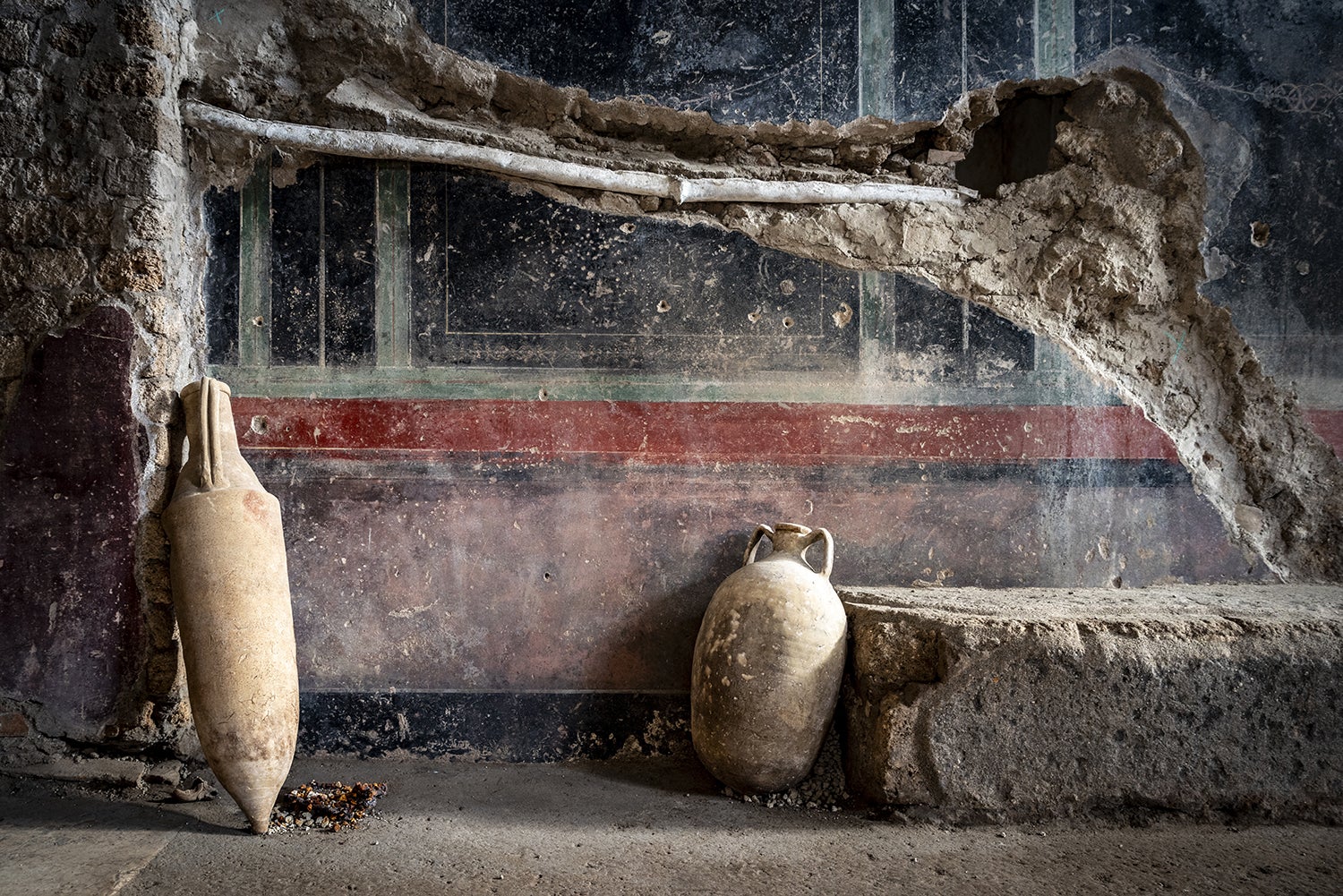Life dimension in the grave of Pompeii, the mystery of sculptures

VIn 79AD, those who belong to the Pompeii region, which is buried in the explosion of the Vezuvius Mountain (and protected for thousands of years), do not usually think of looking beyond the city walls. And it is easy to understand why: in this monumentally preserved town, there are many things from myths -like wall paintings of myths and legends such as Troy Helen to magnificent amphitheater and magnificent plaster baths.
But go out of the doors for a moment and very different – but you are not less important – you are the world.
For the ancient Romans, the roads and roads that entered and emerged in the cities were very important: as a very real “memory lane”, not just to take part. The tombs listed these ancient roads – some of them are only missing, others are larger, greater, inscriptions for the memories of their loved ones for the feast areas to commemorate the dead for your family.
Some of the graves directly appeal to the passage person, as if the inhabitants can talk again and transfer what they have learned. Consider a Pompeiian example founded by Freedman Publius Vesonius Phileos.
It was an invitation to enter and abandon Pompeii, remind him of the ways of life and ways of dying, and to learn from the prevents and examples of your hat.

Therefore, the last discovery of a monumental tomb crowned by a woman and man’s life -sized statues just outside the gates on the east side of the town is not just a fascinating finding. It is also a reminder to stop and remember people who once lived and died in this moving Italian town.
The main feature of the grave is a large wall with niches with niches where burned remains will be placed and vaccinated by the surprising statue of the woman and the man.
They stand side by side, but they don’t touch it.
It has been 1.75 meters, I love being a little longer than that. A modest tunic, cloak and curtain (symbols of Roman femininity) poured and boast of a significant crescent-moon necklace in his neck LunulaThis tells a story about the fertility and birth of women (through the centuries -old connection with lunar cycles). Meanwhile, he instantly dressed in Roman Toga, who defines him as a proud male citizen of Rome.
Who depicts the statues?
When the status quo in the archeology is presented side by side in such graves and graves, a man and a man have always been assuming that he was his wife. Nevertheless, there is an unmissable clue that there is more. Because in his right hand, he holds a bay branch used by the priests to shake the smoke of incense and grass in religious rituals.
In the Roman world, priests had unusual power levels for women – and it was suggested that this woman could be a nun of the goddess Ceres (Demeter’s Roman Equivalent).
So this high -status is shown next to a man. Inclusion of symbols of the status (as a priest) (as a priest) ( TogatusOr “Toga -wearing man”) shows that Pompeiian is there as a contributing member of the society. He could be his mother; It could be more important than that (explaining why it was longer). We don’t know for sure without inscription. The issue is: a woman does not have to be a wife to stand by a man.
What is fascinating is that it is not specific to Pompeii. In my new book Mythica, who looks at the women of Greece, not Rome, I found that new discoveries in archeology have always overthrew the value of a woman’s place and roles in society.

A fascinating example is the burial of a royal in the late bronze age mycens: a woman buried in the royal necropolis about 1700 years before the explosion of Vesuvius Mountain, and a man Pompeii. As typical, this woman immediately labeled by archaeologists who revealed her as the man’s wife. But then DNA analysis entered the picture.
Until 2008, both skeletons were exemplified for DNA and revealed the result that changed the game that they were actually male and sisters. He was buried here as a member of the royal family, not marriage, but by birth. He was there under his own conditions.
From Golden Mycenae to Pompeii’s ashes’ ashes: The ruins of the ancient world tell us a different story than we always think. A woman didn’t have to be a wife to make a difference.
So it’s worth listening to my friend Publius’s advice. Let’s look at the graves of the past and learn.
Emily Hauser is a senior lecturer in classics at Exeter University.
This article was re -published without speech under the Creative Commons license. Read original article.




